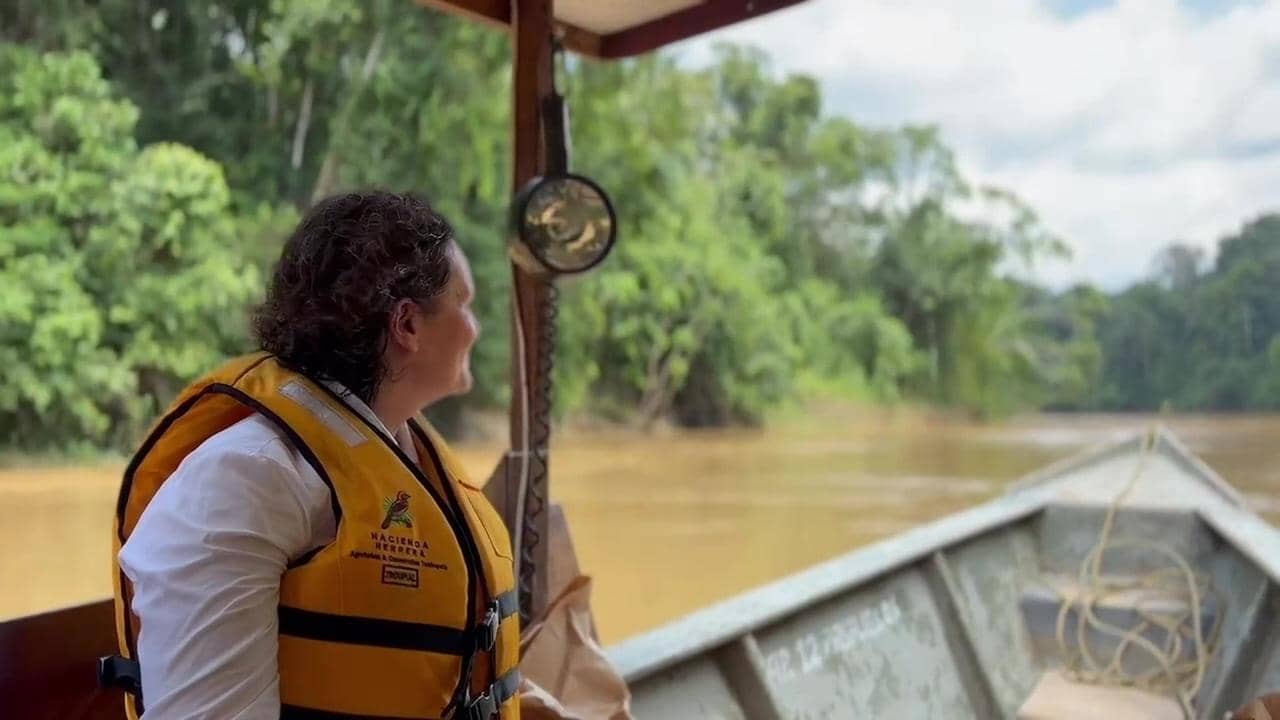Visit on Transformative Initiatives for the Forest's Future. Together with WWF Peru and local producers, our team learned about innovative projects, linking biodiversity conservation in the Peruvian Amazon to sustainable economic development and market opportunities in the international food systems. These initiatives align with the Netherlands' efforts for sustainable food systems world wide, and halting and preventing deforestation in the most important forest in the world, the Amazon.
Beeld: Pexels.com
Exploring Madre de Dios: A Region of Rich Biodiversity and Pressing Challenges
Our agricultural counselor Léontine Crisson, deputy ambassador Jan-Willem le Grand and our embassies’ agricultural advisors Salvador Orrego (Peru) and Nico Gonzalez (Colombia) visited Madre de Dios in the Peruvian Amazon, located on the borders between Peru, Bolivia and Brazil. It has around 45% of its area designated as Natural Protected Areas, maintaining at least 93% of the original forest cover (source: WWF Peru). However, illegal mining and agricultural developments are causing deforestation.
Conservation in Action: WWF Peru’s Initiatives in the Amazon
In this important biodiversity area, WWF Peru is developing multiple conservation and sustainable forest management projects alongside local producers. The LVVN team learned about successful biodiversity conservation efforts, the potential of regenerative livestock, and other collaboration opportunities, including one with Wageningen University and Research Centre on halting deforestation.
Regenerative Livestock: A Sustainable Path for Amazonian Farming
A very interesting programme is the important collaboration with local farmers for regenerative livestock production. This way of working creates sustainable systems, maximizing the carrying capacity per hectare for livestock, while hugely reducing the pressure on the Amazon forest. More animals per hectare in a rotation scheme, with native forages for the cows, frees up spaces for biodiversity conservation and regeneration – as well as saving forests because the farmers don’t have to cut trees anymore.
According to WWF, this transition boosts carbon storage, and restores ecosystems such as soil and water. All while improving climate change resilience, simultaneously enhancing both quality and competitiveness for producers, and maximizing biodiversity corridors regionally.
Preserving Forests through Amazonian Chestnuts
Another important project we visited focuses on sustainable collection of Amazonian chestnuts, also known as Brazil nuts, that are being exported to the European Union. This is a staple product in the area of Boca Pariamanu, where we exchanged with the indigenous community and local forest concessionaires about their lives and work. Thanks to this product, they are able to preserve the Amazon rainforest while supporting their local economic development. You can read on this further in this link.
In the video, in Dutch, our agricultural counselor Léontine Crissone explains more about how this functions.
More information
If you would like to know more about theses initiatives or want to get in touch with the Agricultural & Biodiversity team, please contact us at bog-lvvn@minbuza.nl (for Colombia and Ecuador) or lim-lvvn@minbuza.nl (for Peru).
For more general information, you can visit the country page of the team.
